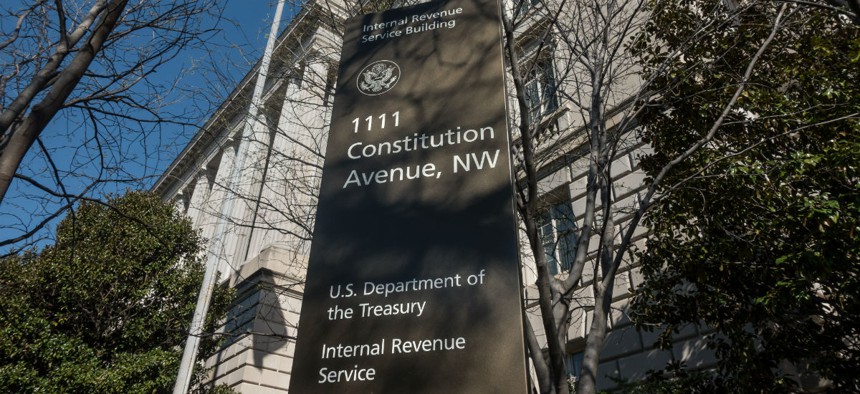
By bakdc / Shutterstock.com
Watchdog Details Shutdown’s Damage to IRS Work During Tax Season
The 35-day lapse in appropriations exploded the correspondence backlog and left 3.8 million calls unanswered.
An inspector general’s routine update on how the Internal Revenue Service is faring during tax filing season provides grim numbers on the waste and delayed service to taxpayers inflicted by this winter’s 35-day partial government shutdown.
Examples from a Thursday report from the Treasury Inspector General for Tax Administration show that from Dec. 22, 2018, to Jan. 21, 2019:
- 16,530 scheduled appointments at Taxpayer Assistance Centers were canceled;
- About 3.8 million attempts by taxpayers to call the IRS went unanswered; and,
- More than 5 million tax forms, correspondence, payments and other correspondence sat idle and increased an existing backlog.
“Compounding the correspondence backlog,” auditors found, “is the fact that each year the last two weeks in December and the month of January are traditionally used to shift customer service representatives from answering telephones to working correspondence in an effort to reduce correspondence inventory prior to the customer service representatives having to focus primarily on answering calls during the filing season.”
After the shutdown, IRS management shifted employees from other offices to assist with reducing the inventory. As of Feb. 26, IRS management indicated, the agency “had sent the more than 5 million documents to the appropriate downstream function for further processing.” An IRS shutdown report shows that as of Feb. 28, the backlog of unprocessed documents was down to 170,000.
Also on the plus side, the agency—despite new challenges in implementing the 2017 Tax Cuts and Jobs Act—actually beat last year’s rate for overall processing of paper (as opposed to electronic) returns, by 11 percent. As of March 8, 2019, it had received 3.4 million, with 1.6 million (47 percent) still awaiting processing. The previous year on March 9, the pile of unprocessed paper returns was nearly 1.8 million.
More broadly, the 2019 filing season as of March 1 had brought in 59.2 million tax returns (with 95 percent electronically filed), the IG reported, and the IRS had issued more than 46 million refunds totaling approximately $142 billion. Its anti-fraud detectors identified about $15.8 million claimed in fraudulent refunds and prevented the issuance of $12.2 million (77.2 percent) in fraudulent refunds, TIGTA found.
As of Feb. 28, the agency had identified and confirmed 3,741 fraudulent tax returns involving identity theft and referred 20,236 prisoner tax returns for extra screening.
And as of March 1, taxpayers had made about “26.5 million total attempts and 16.1 million net attempts (calls made during business hours) to contact the IRS by calling the various customer service toll-free telephone assistance lines,” the report said. The service answered about 9.5 million calls using automation. Live assistors have answered nearly 3.1 million calls and provided a 55.6 percent level of service, with an average speed of answer of 13 minutes. Later this year, IRS call centers plan to help an estimated 2.7 million taxpayers through face-to-face contact at Taxpayer Assistance Centers.







